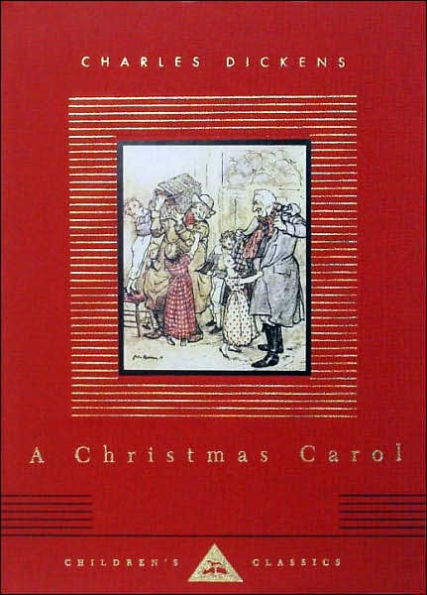Did you know it’s Captain Picard day? Why is it Captain Picard day? What is Captain Picard Day? Well, aside from being the holiest of nerd holidays, in an episode of Star Trek: The Next Generation called “The Pegasus,” children on the Starship Enterprise are depicted celebrating this specific event. It’s like a school project, […]
A Christmas Carol: Illustrated by Arthur Rackham
A gorgeous hardcover edition of the timeless holiday classic, featuring stunning full-color illustrations by Arthur Rackham, with a gilt-stamped cloth cover, acid-free paper, sewn bindings, and a silk ribbon marker.
No holiday season is complete without Charles Dickens's dramatic and heartwarming story of the transformation of miserly Ebenezer Scrooge through the efforts of the Ghosts of Christmas Past, Present, and Future. Set on a cold Christmas Eve in Victorian London, and featuring Scrooge's long-suffering and mild-mannered clerk, Bob Cratchit; Bob’s kindhearted son, Tiny Tim; and a host of colorful characters, A Christmas Carol was an instant hit and has been beloved ever since by generations of readers of all ages.
1104780873
No holiday season is complete without Charles Dickens's dramatic and heartwarming story of the transformation of miserly Ebenezer Scrooge through the efforts of the Ghosts of Christmas Past, Present, and Future. Set on a cold Christmas Eve in Victorian London, and featuring Scrooge's long-suffering and mild-mannered clerk, Bob Cratchit; Bob’s kindhearted son, Tiny Tim; and a host of colorful characters, A Christmas Carol was an instant hit and has been beloved ever since by generations of readers of all ages.
A Christmas Carol: Illustrated by Arthur Rackham
A gorgeous hardcover edition of the timeless holiday classic, featuring stunning full-color illustrations by Arthur Rackham, with a gilt-stamped cloth cover, acid-free paper, sewn bindings, and a silk ribbon marker.
No holiday season is complete without Charles Dickens's dramatic and heartwarming story of the transformation of miserly Ebenezer Scrooge through the efforts of the Ghosts of Christmas Past, Present, and Future. Set on a cold Christmas Eve in Victorian London, and featuring Scrooge's long-suffering and mild-mannered clerk, Bob Cratchit; Bob’s kindhearted son, Tiny Tim; and a host of colorful characters, A Christmas Carol was an instant hit and has been beloved ever since by generations of readers of all ages.
No holiday season is complete without Charles Dickens's dramatic and heartwarming story of the transformation of miserly Ebenezer Scrooge through the efforts of the Ghosts of Christmas Past, Present, and Future. Set on a cold Christmas Eve in Victorian London, and featuring Scrooge's long-suffering and mild-mannered clerk, Bob Cratchit; Bob’s kindhearted son, Tiny Tim; and a host of colorful characters, A Christmas Carol was an instant hit and has been beloved ever since by generations of readers of all ages.
20.0
In Stock
5
1

A Christmas Carol: Illustrated by Arthur Rackham
180
A Christmas Carol: Illustrated by Arthur Rackham
180
20.0
In Stock

Product Details
| ISBN-13: | 9780679436393 |
|---|---|
| Publisher: | Knopf Doubleday Publishing Group |
| Publication date: | 09/27/1994 |
| Series: | Everyman's Library Children's Classics Series |
| Pages: | 180 |
| Sales rank: | 398,573 |
| Product dimensions: | 6.28(w) x 8.27(h) x 0.61(d) |
| Age Range: | 7 - 17 Years |
About the Author

From the B&N Reads Blog
